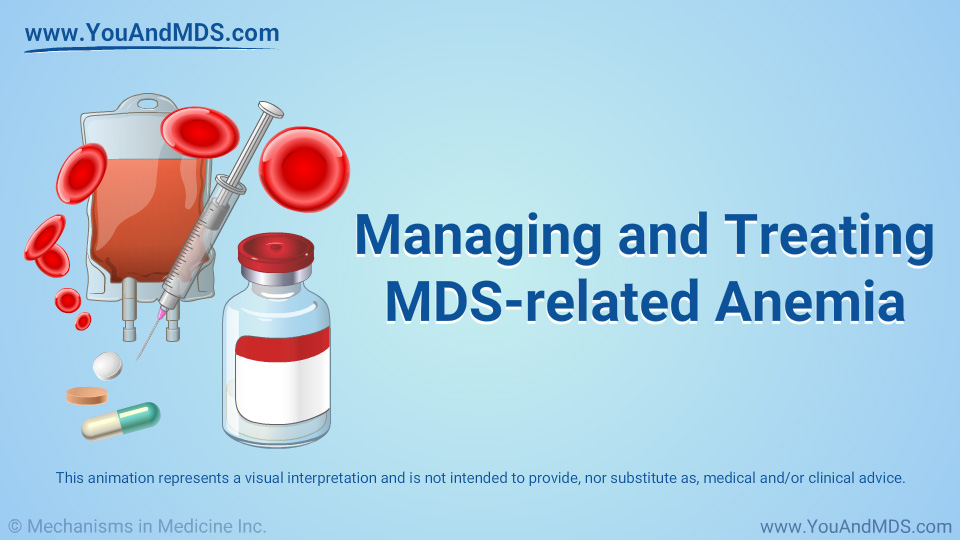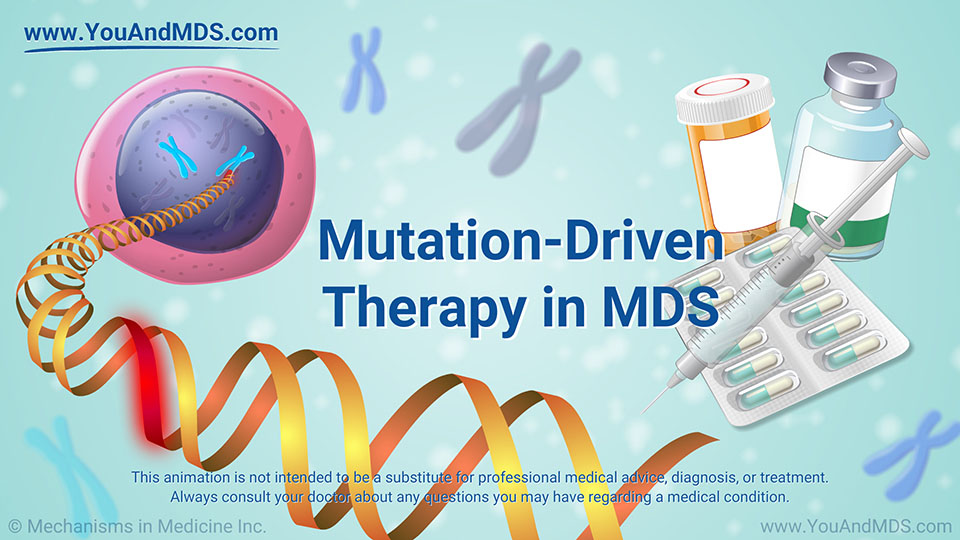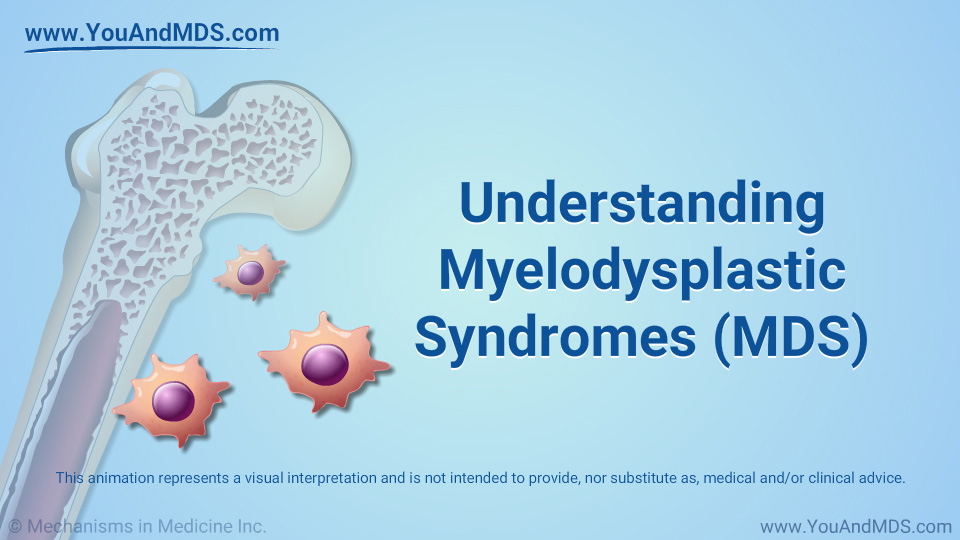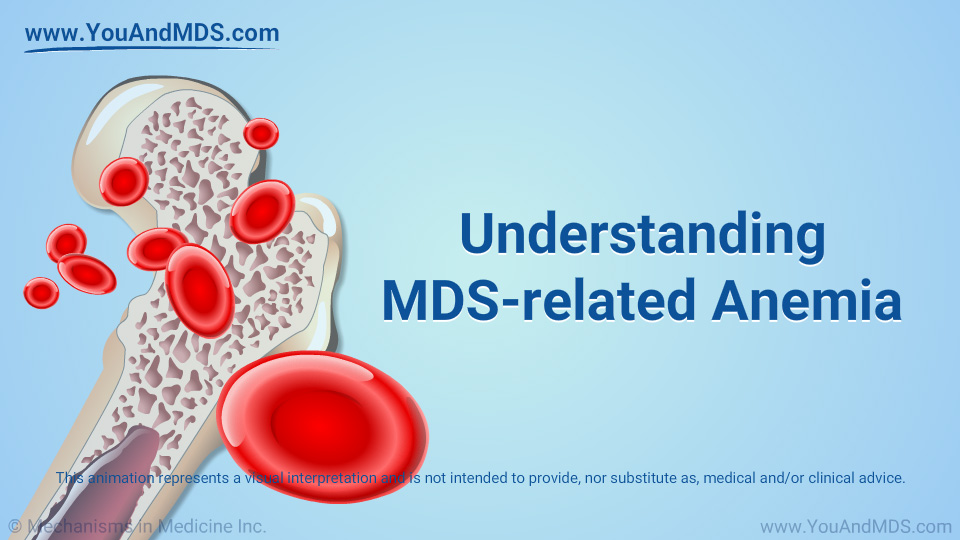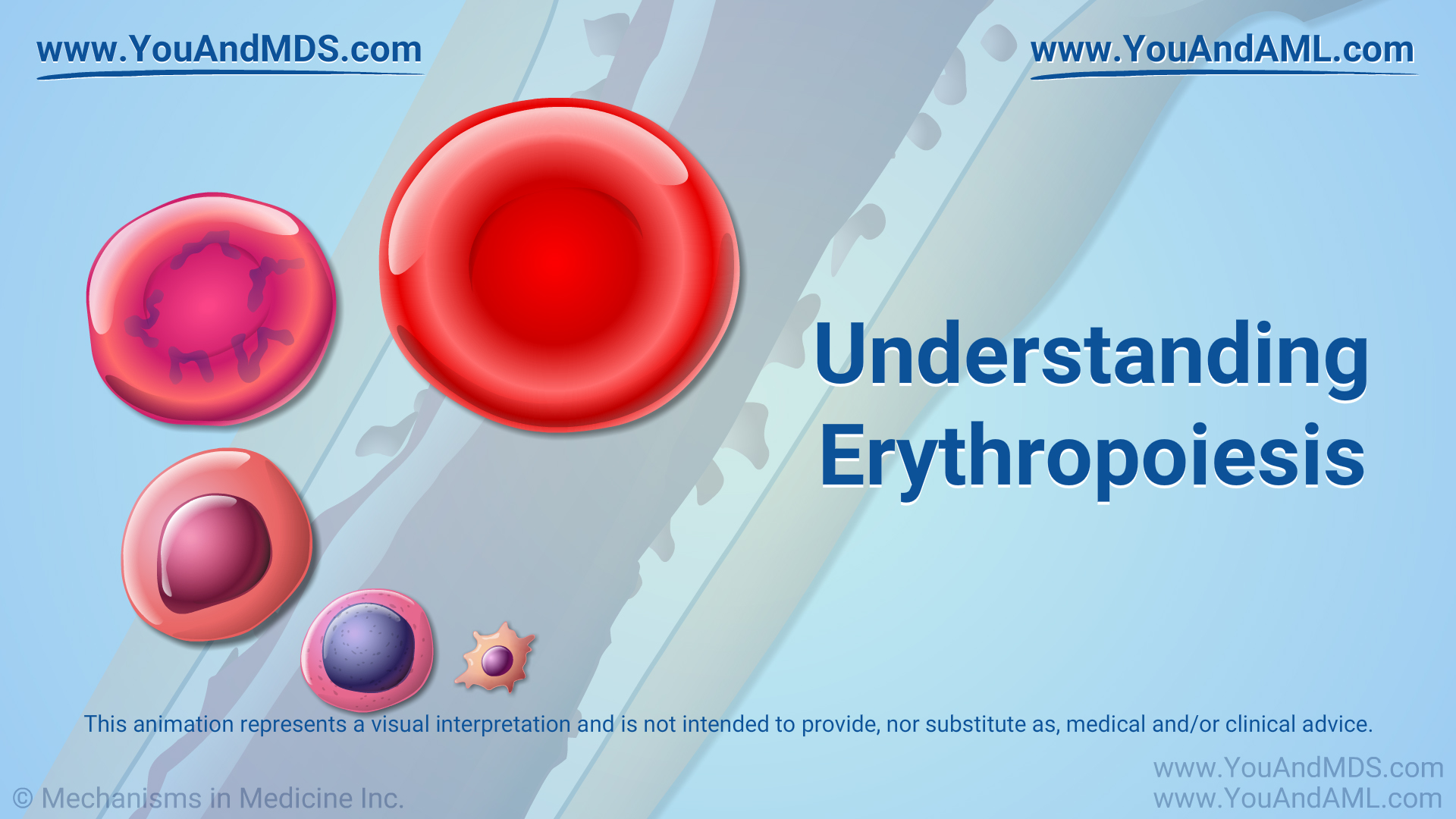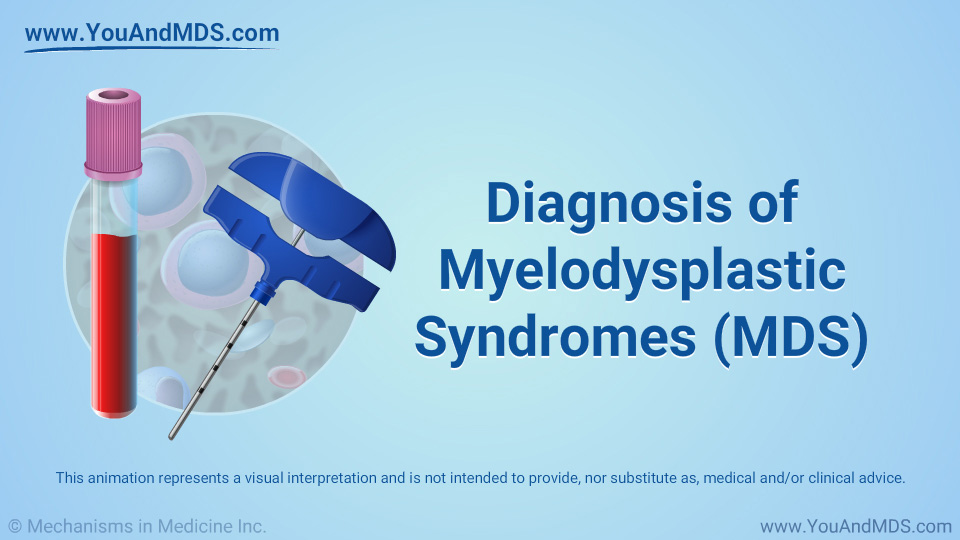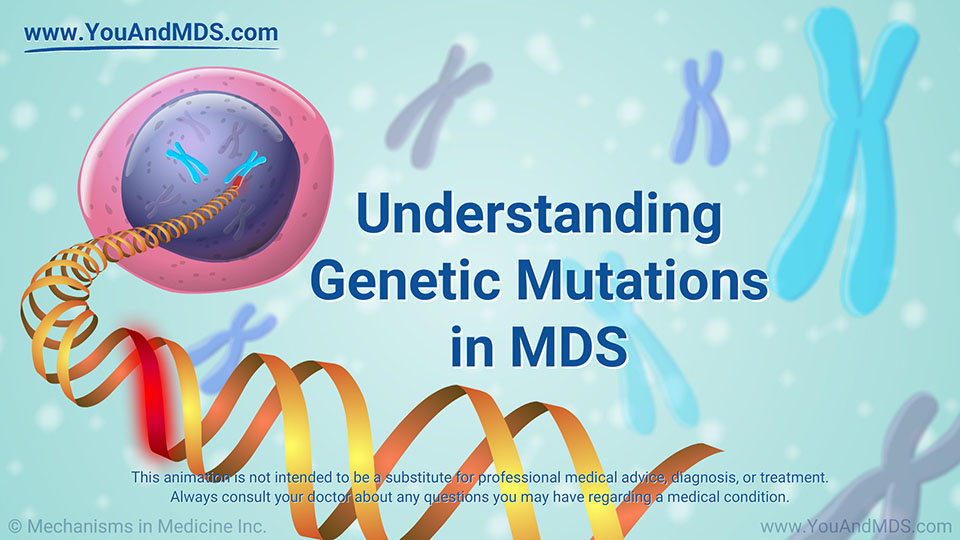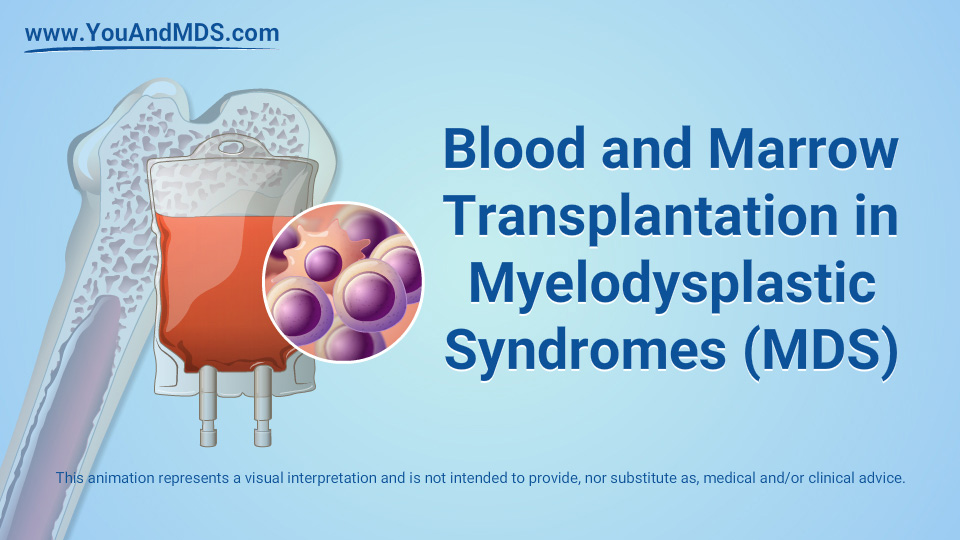Slide Show - Management and Treatment of MDS
This slide show explains the current treatment approaches for myelodysplastic syndromes (MDS). Treatment options are grouped into 3 main types: observation, supportive care, and disease-modifying treatment. The slide show also describes the goals of treatment for low-risk versus high-risk MDS, as well as clinical trials.
Click here to take our SURVEY
Your feedback is important to us! We will use your feedback to develop future areas of content about MDS which will help other patients, caregivers and families.
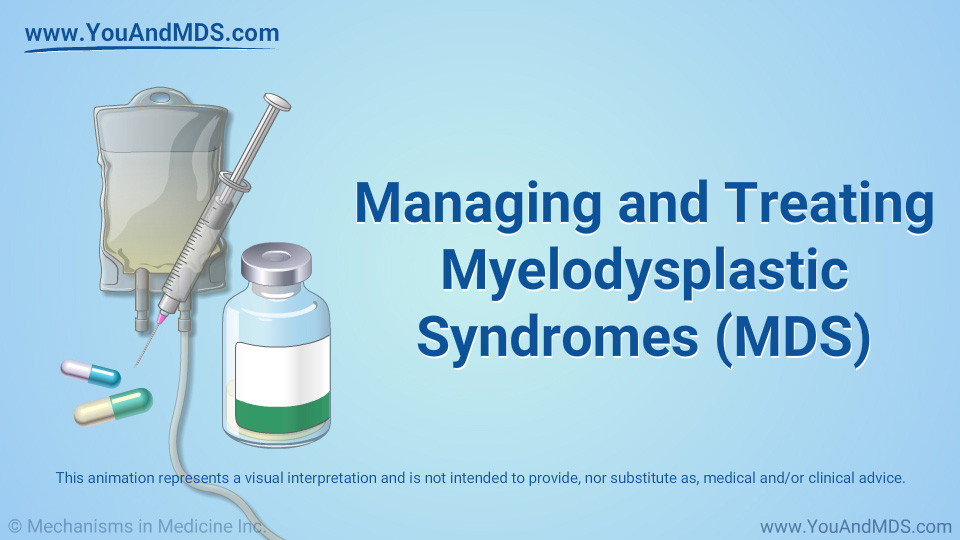
Animation - Management and Treatment of MDS
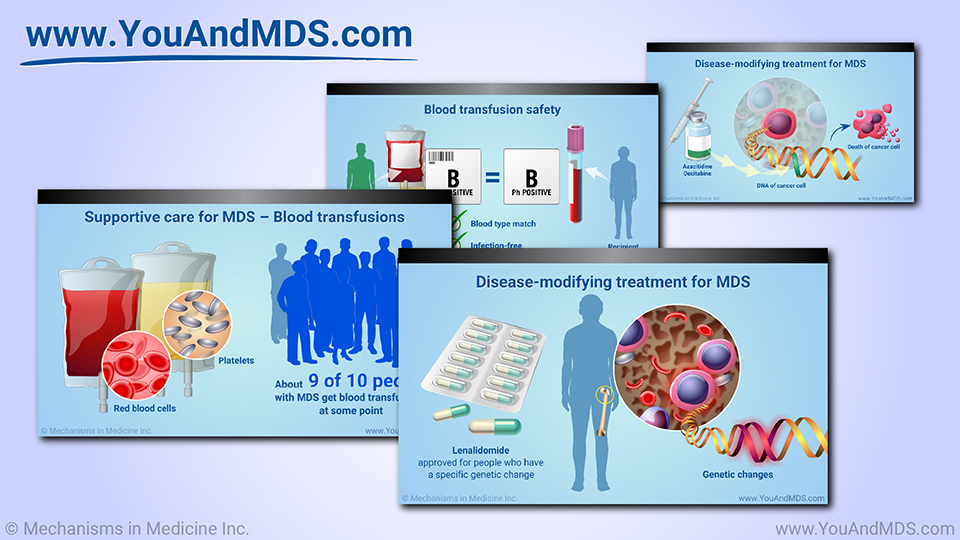
Slide Show - Management and Treatment of MDS
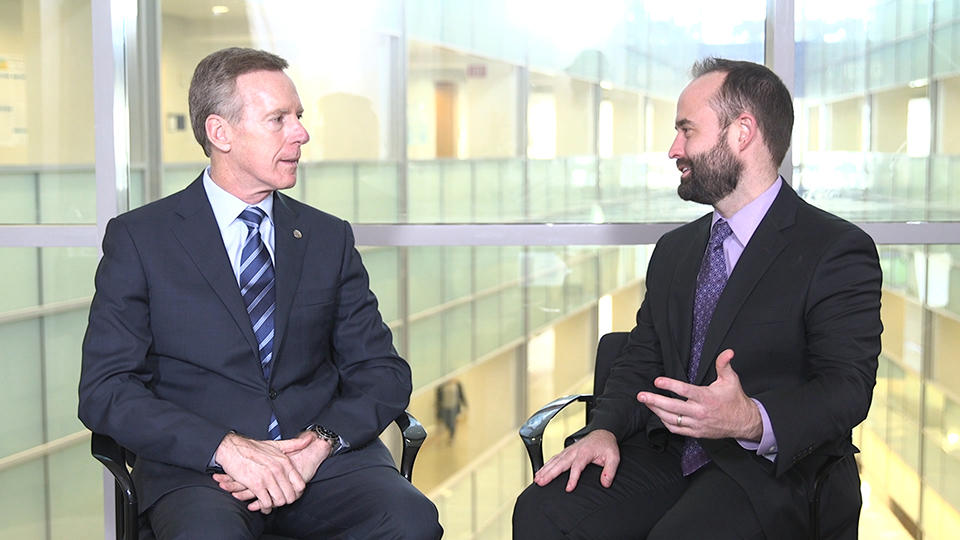
1.
What are the treatment options for MDS?

2.
How is lower-risk MDS treated?
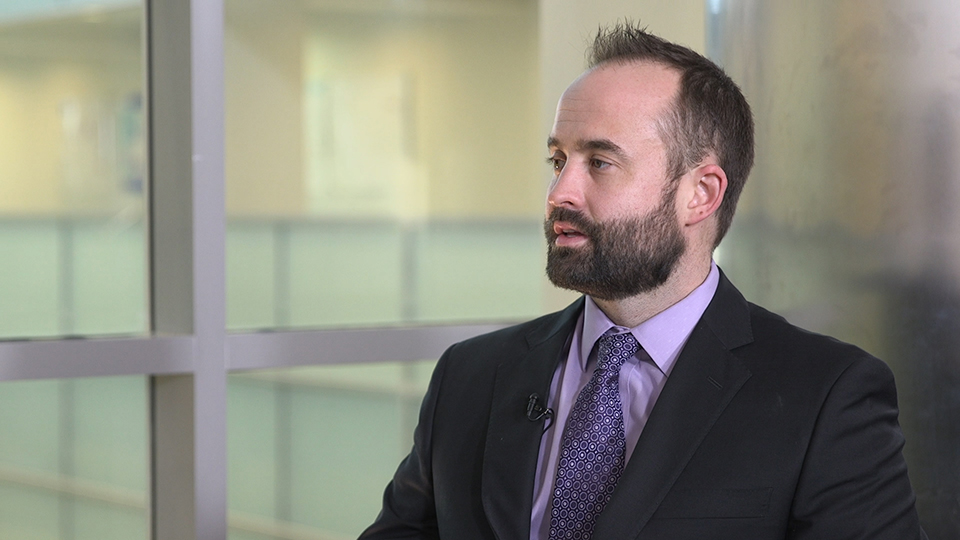
3.
How is higher-risk MDS treated?

4.
What is supportive care for MDS?

5.
Are vitamin supplements beneficial for MDS treatment?

6.
What are erythropoietin-stimulating agents (ESAs)?

7.
What is cytotoxic chemotherapy and when is it used for MDS?

8.
What is lenalidomide and when is it used for MDS?

9.
What are hypomethylating agents and when are they used for MDS?

10.
How long will MDS treatment be given?

11.
What is immunosuppressive therapy and when is it used for MDS?

12.
What other options are there if first-line MDS treatment doesn’t work?

13.
David's story: How was your MDS initially treated?


